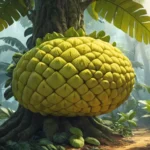
Pumpkins are a staple of fall harvest festivities and Halloween celebrations. With their distinctive orange color and distinctly round shape, pumpkins have become synonymous with autumn. But did you know that these versatile vegetables have been cultivated for over 5,000 years? In this comprehensive guide, we will explore the history, types, benefits, and uses of pumpkin.
1. History of Pumpkins:
The origin of pumpkins can be traced back to Central America around 7,000 to 5,500 BCE. The indigenous peoples of North America later cultivated it as a staple food source. Christopher Columbus is believed to have brought pumpkin seeds back to Europe from his voyage in 1492. Over time, various types of pumpkins were developed for different purposes such as culinary uses, decoration, and even for the production of oil.
2. Types of Pumpkins:
There are many varieties of pumpkins available today, each with its unique shape, size, color, and flavor. Some popular types include:
-
Jack-o’-lantern: These are large orange pumpkins commonly used for carving due to their thick walls and flat bottoms. They have a tough skin, making them ideal for decoration purposes.
-
Sugar pumpkins: Also known as pie pumpkins, these small-to-medium sized orange pumpkins are sweet when cooked and perfect for pies, purees, and other dessert recipes.
-
Cushaw or winter squash: These are pale green or grayish-white pumpkins with a sweet taste similar to corn. They can be eaten raw or cooked.
3. Health Benefits of Pumpkins:
Pumpkin is not only delicious but also packed with nutrients that promote good health. Some key benefits include:
-
Rich in vitamins and minerals: Pumpkins contain high levels of vitamins A, C, E, and various B-complex vitamins as well as essential minerals such as potassium, calcium, iron, and magnesium.
-
Promotes healthy vision: The high levels of beta-carotene in pumpkin convert to vitamin A, which is crucial for maintaining good eye health and preventing diseases like macular degeneration and cataracts.
-
Supports digestive health: The dietary fiber found in pumpkins aids in digestion by promoting regular bowel movements while also reducing constipation risk.
4. Uses of Pumpkin:
Pumpkins can be used in many different ways, from food to crafts and beyond. Some common uses include:
-
Cooking: Pumpkin can be used as an ingredient in various dishes such as soups, stews, risottos, pasta sauces, pies, bread, and even savory dishes like stuffed pumpkins.
-
Decorations: Carving jack-o’-lanterns has become a popular Halloween tradition worldwide. Additionally, smaller pumpkins can be painted or used as decorative elements in fall displays.
-
Seeds: Pumpkin seeds are edible and rich in nutrients like magnesium, manganese, zinc, and iron. They can be roasted and eaten as a snack or added to salads, trail mixes, and more.
In conclusion, pumpkins are versatile vegetables with a long history dating back over 5,000 years. With numerous types available for various uses, from culinary delights to decorative elements, and packed with essential vitamins and minerals, it’s no wonder they remain popular during autumn celebrations. So next time you see a pumpkin, appreciate not only its vibrant appearance but also the wealth of benefits it offers.










